[fusion_builder_container hundred_percent=”yes” overflow=”visible”][fusion_builder_row][fusion_builder_column type=”1_1″ background_position=”left top” background_color=”” border_size=”” border_color=”” border_style=”solid” spacing=”yes” background_image=”” background_repeat=”no-repeat” padding=”” margin_top=”0px” margin_bottom=”0px” class=”” id=”” animation_type=”” animation_speed=”0.3″ animation_direction=”left” hide_on_mobile=”no” center_content=”no” min_height=”none”][fusion_text]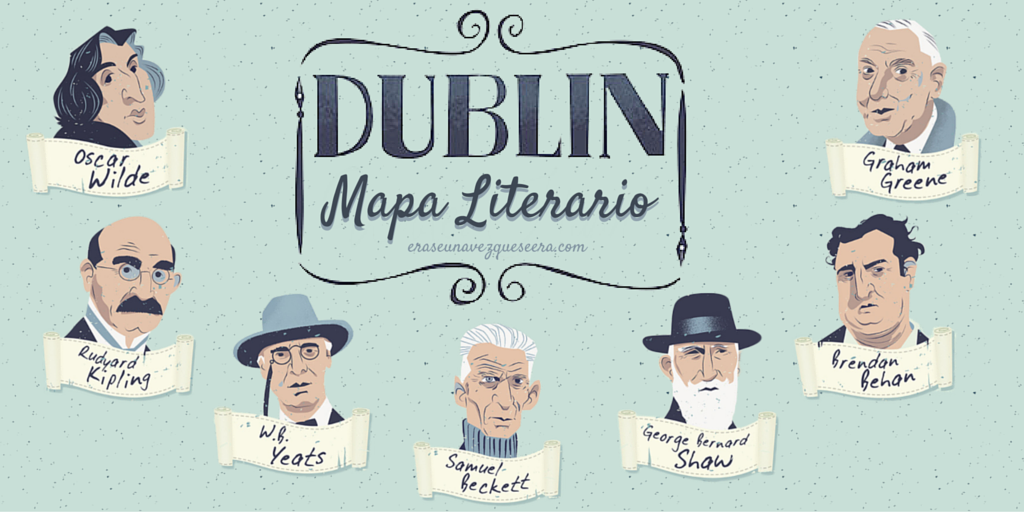 [/fusion_text][fusion_text]Dublín, el corazón de Irlanda, no solo es la ciudad del Ulises. Más allá de James Joyce, sus calles, teatros y bares también han servido de refugio e inspiración para poemas, obras de teatro y libros de otros aclamados autores. Algunos irlandeses, como Samuel Beckett, George Bernard Shaw, William Butler Yeats, Brendan Behan u Oscar Wilde. Otros como Ruyard Kipling o Graham Greene, simplemente cayeron en el embrujo dublinés.
[/fusion_text][fusion_text]Dublín, el corazón de Irlanda, no solo es la ciudad del Ulises. Más allá de James Joyce, sus calles, teatros y bares también han servido de refugio e inspiración para poemas, obras de teatro y libros de otros aclamados autores. Algunos irlandeses, como Samuel Beckett, George Bernard Shaw, William Butler Yeats, Brendan Behan u Oscar Wilde. Otros como Ruyard Kipling o Graham Greene, simplemente cayeron en el embrujo dublinés.
Por tal motivo, la página oficial de turismo de Dublín, Visit Dublin, editó un simpático mapa con esos lugares literarios significativos de la capital.[/fusion_text][fusion_text]
Mapa literario de Dublín
[/fusion_text][fusion_text]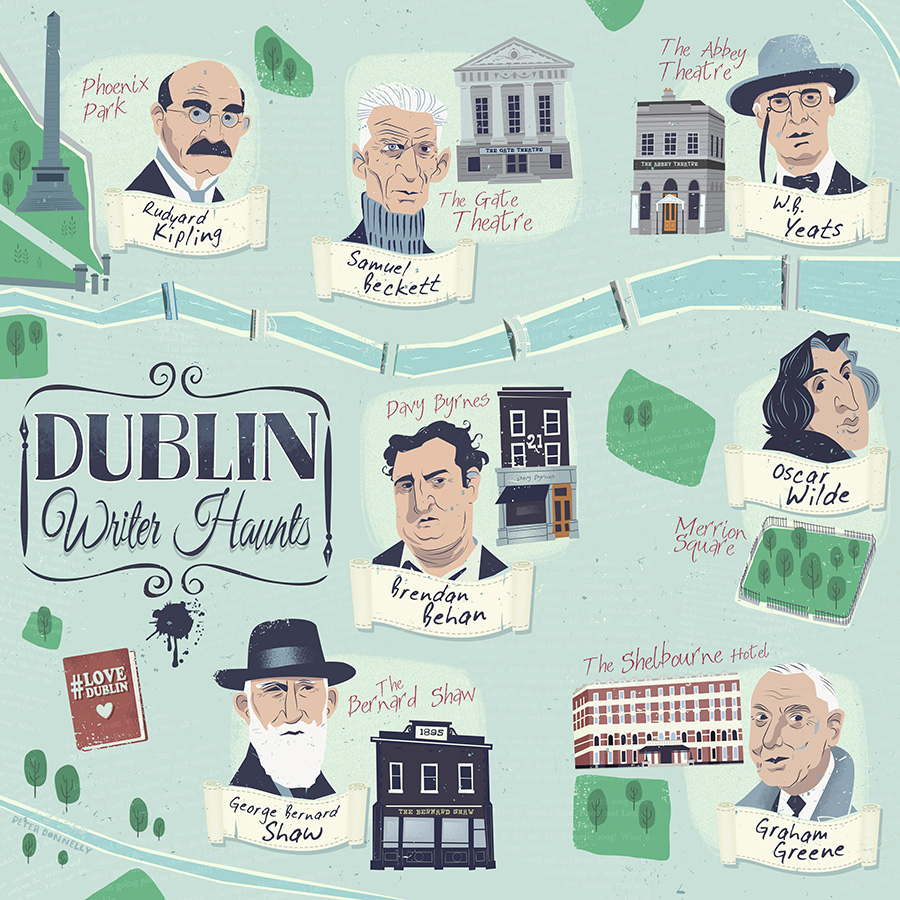 [/fusion_text][/fusion_builder_column][/fusion_builder_row][/fusion_builder_container][fusion_builder_container background_color=”” background_image=”” background_parallax=”none” enable_mobile=”no” parallax_speed=”0.3″ background_repeat=”no-repeat” background_position=”left top” video_url=”” video_aspect_ratio=”16:9″ video_webm=”” video_mp4=”” video_ogv=”” video_preview_image=”” overlay_color=”” overlay_opacity=”0.5″ video_mute=”yes” video_loop=”yes” fade=”no” border_size=”0px” border_color=”” border_style=”” padding_top=”20″ padding_bottom=”20″ padding_left=”” padding_right=”” hundred_percent=”no” equal_height_columns=”no” hide_on_mobile=”no” menu_anchor=”” class=”” id=””][fusion_builder_row][fusion_builder_column type=”1_1″ background_position=”left top” background_color=”” border_size=”” border_color=”” border_style=”solid” spacing=”yes” background_image=”” background_repeat=”no-repeat” padding=”” margin_top=”0px” margin_bottom=”0px” class=”” id=”” animation_type=”” animation_speed=”0.3″ animation_direction=”left” hide_on_mobile=”no” center_content=”no” min_height=”none”][fusion_title size=”2″ content_align=”center” style_type=”single solid” sep_color=”” margin_top=”” margin_bottom=”” class=”” id=””]Oscar Wilde[/fusion_title][fusion_text]
[/fusion_text][/fusion_builder_column][/fusion_builder_row][/fusion_builder_container][fusion_builder_container background_color=”” background_image=”” background_parallax=”none” enable_mobile=”no” parallax_speed=”0.3″ background_repeat=”no-repeat” background_position=”left top” video_url=”” video_aspect_ratio=”16:9″ video_webm=”” video_mp4=”” video_ogv=”” video_preview_image=”” overlay_color=”” overlay_opacity=”0.5″ video_mute=”yes” video_loop=”yes” fade=”no” border_size=”0px” border_color=”” border_style=”” padding_top=”20″ padding_bottom=”20″ padding_left=”” padding_right=”” hundred_percent=”no” equal_height_columns=”no” hide_on_mobile=”no” menu_anchor=”” class=”” id=””][fusion_builder_row][fusion_builder_column type=”1_1″ background_position=”left top” background_color=”” border_size=”” border_color=”” border_style=”solid” spacing=”yes” background_image=”” background_repeat=”no-repeat” padding=”” margin_top=”0px” margin_bottom=”0px” class=”” id=”” animation_type=”” animation_speed=”0.3″ animation_direction=”left” hide_on_mobile=”no” center_content=”no” min_height=”none”][fusion_title size=”2″ content_align=”center” style_type=”single solid” sep_color=”” margin_top=”” margin_bottom=”” class=”” id=””]Oscar Wilde[/fusion_title][fusion_text]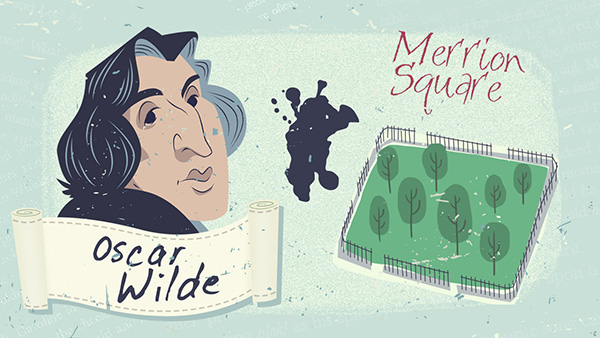 [/fusion_text][fusion_text]En el parque de Marrion Square se encuentra la estatua en honor de Oscar Wilde, realizada por Danny Osborne, justo enfrente de la casa en la que el autor pasó su infancia, y que ahora es la sede del American College Dublin.[/fusion_text][/fusion_builder_column][/fusion_builder_row][/fusion_builder_container][fusion_builder_container background_color=”” background_image=”” background_parallax=”none” enable_mobile=”no” parallax_speed=”0.3″ background_repeat=”no-repeat” background_position=”left top” video_url=”” video_aspect_ratio=”16:9″ video_webm=”” video_mp4=”” video_ogv=”” video_preview_image=”” overlay_color=”” overlay_opacity=”0.5″ video_mute=”yes” video_loop=”yes” fade=”no” border_size=”0px” border_color=”” border_style=”” padding_top=”20″ padding_bottom=”20″ padding_left=”” padding_right=”” hundred_percent=”no” equal_height_columns=”no” hide_on_mobile=”no” menu_anchor=”” class=”” id=””][fusion_builder_row][fusion_builder_column type=”1_1″ background_position=”left top” background_color=”” border_size=”” border_color=”” border_style=”solid” spacing=”yes” background_image=”” background_repeat=”no-repeat” padding=”” margin_top=”0px” margin_bottom=”0px” class=”” id=”” animation_type=”” animation_speed=”0.3″ animation_direction=”left” hide_on_mobile=”no” center_content=”no” min_height=”none”][fusion_title size=”2″ content_align=”center” style_type=”single solid” sep_color=”” margin_top=”” margin_bottom=”” class=”” id=””]Samuel Beckett[/fusion_title][fusion_text]
[/fusion_text][fusion_text]En el parque de Marrion Square se encuentra la estatua en honor de Oscar Wilde, realizada por Danny Osborne, justo enfrente de la casa en la que el autor pasó su infancia, y que ahora es la sede del American College Dublin.[/fusion_text][/fusion_builder_column][/fusion_builder_row][/fusion_builder_container][fusion_builder_container background_color=”” background_image=”” background_parallax=”none” enable_mobile=”no” parallax_speed=”0.3″ background_repeat=”no-repeat” background_position=”left top” video_url=”” video_aspect_ratio=”16:9″ video_webm=”” video_mp4=”” video_ogv=”” video_preview_image=”” overlay_color=”” overlay_opacity=”0.5″ video_mute=”yes” video_loop=”yes” fade=”no” border_size=”0px” border_color=”” border_style=”” padding_top=”20″ padding_bottom=”20″ padding_left=”” padding_right=”” hundred_percent=”no” equal_height_columns=”no” hide_on_mobile=”no” menu_anchor=”” class=”” id=””][fusion_builder_row][fusion_builder_column type=”1_1″ background_position=”left top” background_color=”” border_size=”” border_color=”” border_style=”solid” spacing=”yes” background_image=”” background_repeat=”no-repeat” padding=”” margin_top=”0px” margin_bottom=”0px” class=”” id=”” animation_type=”” animation_speed=”0.3″ animation_direction=”left” hide_on_mobile=”no” center_content=”no” min_height=”none”][fusion_title size=”2″ content_align=”center” style_type=”single solid” sep_color=”” margin_top=”” margin_bottom=”” class=”” id=””]Samuel Beckett[/fusion_title][fusion_text]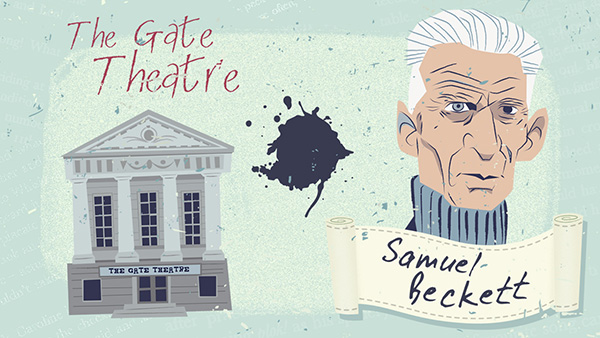 [/fusion_text][/fusion_builder_column][/fusion_builder_row][/fusion_builder_container][fusion_builder_container hundred_percent=”yes” overflow=”visible”][fusion_builder_row][fusion_builder_column type=”1_1″ background_position=”left top” background_color=”” border_size=”” border_color=”” border_style=”solid” spacing=”yes” background_image=”” background_repeat=”no-repeat” padding=”” margin_top=”0px” margin_bottom=”0px” class=”” id=”” animation_type=”” animation_speed=”0.3″ animation_direction=”left” hide_on_mobile=”no” center_content=”no” min_height=”none”][fusion_text]En el Gate Theatre de Cavendish Row se han representado muchas de las obras de Samuel Beckett. Precisamente este teatro lanzó en 1991 el Festival de Samuel Beckett, con 19 obras del autor. La ciudad también dedicó un puente en su honor en 2009, realizado por el arquitecto español Santiago Calatrava.[/fusion_text][/fusion_builder_column][/fusion_builder_row][/fusion_builder_container][fusion_builder_container background_color=”” background_image=”” background_parallax=”none” enable_mobile=”no” parallax_speed=”0.3″ background_repeat=”no-repeat” background_position=”left top” video_url=”” video_aspect_ratio=”16:9″ video_webm=”” video_mp4=”” video_ogv=”” video_preview_image=”” overlay_color=”” overlay_opacity=”0.5″ video_mute=”yes” video_loop=”yes” fade=”no” border_size=”0px” border_color=”” border_style=”” padding_top=”20″ padding_bottom=”20″ padding_left=”” padding_right=”” hundred_percent=”no” equal_height_columns=”no” hide_on_mobile=”no” menu_anchor=”” class=”” id=””][fusion_builder_row][fusion_builder_column type=”1_1″ background_position=”left top” background_color=”” border_size=”” border_color=”” border_style=”solid” spacing=”yes” background_image=”” background_repeat=”no-repeat” padding=”” margin_top=”0px” margin_bottom=”0px” class=”” id=”” animation_type=”” animation_speed=”0.3″ animation_direction=”left” hide_on_mobile=”no” center_content=”no” min_height=”none”][fusion_title size=”2″ content_align=”center” style_type=”single solid” sep_color=”” margin_top=”” margin_bottom=”” class=”” id=””]George Bernard Shaw[/fusion_title][fusion_text]
[/fusion_text][/fusion_builder_column][/fusion_builder_row][/fusion_builder_container][fusion_builder_container hundred_percent=”yes” overflow=”visible”][fusion_builder_row][fusion_builder_column type=”1_1″ background_position=”left top” background_color=”” border_size=”” border_color=”” border_style=”solid” spacing=”yes” background_image=”” background_repeat=”no-repeat” padding=”” margin_top=”0px” margin_bottom=”0px” class=”” id=”” animation_type=”” animation_speed=”0.3″ animation_direction=”left” hide_on_mobile=”no” center_content=”no” min_height=”none”][fusion_text]En el Gate Theatre de Cavendish Row se han representado muchas de las obras de Samuel Beckett. Precisamente este teatro lanzó en 1991 el Festival de Samuel Beckett, con 19 obras del autor. La ciudad también dedicó un puente en su honor en 2009, realizado por el arquitecto español Santiago Calatrava.[/fusion_text][/fusion_builder_column][/fusion_builder_row][/fusion_builder_container][fusion_builder_container background_color=”” background_image=”” background_parallax=”none” enable_mobile=”no” parallax_speed=”0.3″ background_repeat=”no-repeat” background_position=”left top” video_url=”” video_aspect_ratio=”16:9″ video_webm=”” video_mp4=”” video_ogv=”” video_preview_image=”” overlay_color=”” overlay_opacity=”0.5″ video_mute=”yes” video_loop=”yes” fade=”no” border_size=”0px” border_color=”” border_style=”” padding_top=”20″ padding_bottom=”20″ padding_left=”” padding_right=”” hundred_percent=”no” equal_height_columns=”no” hide_on_mobile=”no” menu_anchor=”” class=”” id=””][fusion_builder_row][fusion_builder_column type=”1_1″ background_position=”left top” background_color=”” border_size=”” border_color=”” border_style=”solid” spacing=”yes” background_image=”” background_repeat=”no-repeat” padding=”” margin_top=”0px” margin_bottom=”0px” class=”” id=”” animation_type=”” animation_speed=”0.3″ animation_direction=”left” hide_on_mobile=”no” center_content=”no” min_height=”none”][fusion_title size=”2″ content_align=”center” style_type=”single solid” sep_color=”” margin_top=”” margin_bottom=”” class=”” id=””]George Bernard Shaw[/fusion_title][fusion_text]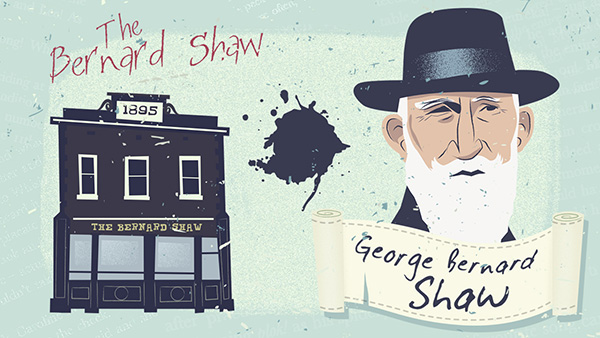 [/fusion_text][fusion_text]Bernard Shaw es el único autor que posee un Nobel de Literatura y un Oscar por Pygmalion, que se adaptó al cine como My fair lady. Shaw legó una tercera parte de los derechos de autor de esta obra a la Galería Nacional de Irlanda, en la que pasó mucho días durante su juventud. En su honor, en la calle Richmon se encuentra el bar The Bernard Shaw.[/fusion_text][/fusion_builder_column][/fusion_builder_row][/fusion_builder_container][fusion_builder_container background_color=”” background_image=”” background_parallax=”none” enable_mobile=”no” parallax_speed=”0.3″ background_repeat=”no-repeat” background_position=”left top” video_url=”” video_aspect_ratio=”16:9″ video_webm=”” video_mp4=”” video_ogv=”” video_preview_image=”” overlay_color=”” overlay_opacity=”0.5″ video_mute=”yes” video_loop=”yes” fade=”no” border_size=”0px” border_color=”” border_style=”” padding_top=”20″ padding_bottom=”20″ padding_left=”” padding_right=”” hundred_percent=”no” equal_height_columns=”no” hide_on_mobile=”no” menu_anchor=”” class=”” id=””][fusion_builder_row][fusion_builder_column type=”1_1″ background_position=”left top” background_color=”” border_size=”” border_color=”” border_style=”solid” spacing=”yes” background_image=”” background_repeat=”no-repeat” padding=”” margin_top=”0px” margin_bottom=”0px” class=”” id=”” animation_type=”” animation_speed=”0.3″ animation_direction=”left” hide_on_mobile=”no” center_content=”no” min_height=”none”][fusion_title size=”2″ content_align=”center” style_type=”single solid” sep_color=”” margin_top=”” margin_bottom=”” class=”” id=””]William Butler Yeats[/fusion_title][fusion_text]
[/fusion_text][fusion_text]Bernard Shaw es el único autor que posee un Nobel de Literatura y un Oscar por Pygmalion, que se adaptó al cine como My fair lady. Shaw legó una tercera parte de los derechos de autor de esta obra a la Galería Nacional de Irlanda, en la que pasó mucho días durante su juventud. En su honor, en la calle Richmon se encuentra el bar The Bernard Shaw.[/fusion_text][/fusion_builder_column][/fusion_builder_row][/fusion_builder_container][fusion_builder_container background_color=”” background_image=”” background_parallax=”none” enable_mobile=”no” parallax_speed=”0.3″ background_repeat=”no-repeat” background_position=”left top” video_url=”” video_aspect_ratio=”16:9″ video_webm=”” video_mp4=”” video_ogv=”” video_preview_image=”” overlay_color=”” overlay_opacity=”0.5″ video_mute=”yes” video_loop=”yes” fade=”no” border_size=”0px” border_color=”” border_style=”” padding_top=”20″ padding_bottom=”20″ padding_left=”” padding_right=”” hundred_percent=”no” equal_height_columns=”no” hide_on_mobile=”no” menu_anchor=”” class=”” id=””][fusion_builder_row][fusion_builder_column type=”1_1″ background_position=”left top” background_color=”” border_size=”” border_color=”” border_style=”solid” spacing=”yes” background_image=”” background_repeat=”no-repeat” padding=”” margin_top=”0px” margin_bottom=”0px” class=”” id=”” animation_type=”” animation_speed=”0.3″ animation_direction=”left” hide_on_mobile=”no” center_content=”no” min_height=”none”][fusion_title size=”2″ content_align=”center” style_type=”single solid” sep_color=”” margin_top=”” margin_bottom=”” class=”” id=””]William Butler Yeats[/fusion_title][fusion_text]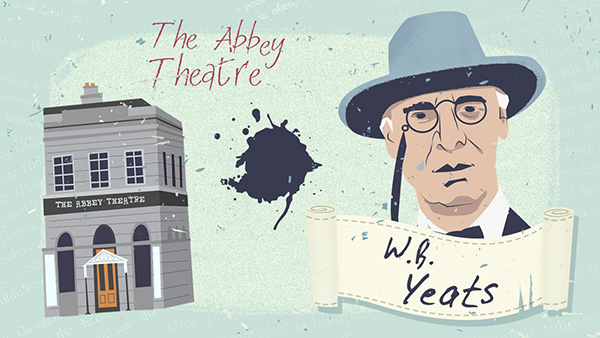 [/fusion_text][fusion_text]Yeats fundó en 1904 junto con Edward Martyn y Lady Gregory el Abbey Theatre, también conocido como Teatro Nacional de Irlanda. Este espacio de la calle Lower Abbey estuvo en sus inicios muy asociado a los escritores del renacimiento celta, muchos de los cuales se involucraron en su fundación y presentaron sus obras allí.[/fusion_text][/fusion_builder_column][/fusion_builder_row][/fusion_builder_container][fusion_builder_container background_color=”” background_image=”” background_parallax=”none” enable_mobile=”no” parallax_speed=”0.3″ background_repeat=”no-repeat” background_position=”left top” video_url=”” video_aspect_ratio=”16:9″ video_webm=”” video_mp4=”” video_ogv=”” video_preview_image=”” overlay_color=”” overlay_opacity=”0.5″ video_mute=”yes” video_loop=”yes” fade=”no” border_size=”0px” border_color=”” border_style=”” padding_top=”20″ padding_bottom=”20″ padding_left=”” padding_right=”” hundred_percent=”no” equal_height_columns=”no” hide_on_mobile=”no” menu_anchor=”” class=”” id=””][fusion_builder_row][fusion_builder_column type=”1_1″ background_position=”left top” background_color=”” border_size=”” border_color=”” border_style=”solid” spacing=”yes” background_image=”” background_repeat=”no-repeat” padding=”” margin_top=”0px” margin_bottom=”0px” class=”” id=”” animation_type=”” animation_speed=”0.3″ animation_direction=”left” hide_on_mobile=”no” center_content=”no” min_height=”none”][fusion_title size=”2″ content_align=”center” style_type=”single solid” sep_color=”” margin_top=”” margin_bottom=”” class=”” id=””]Brendan Behan[/fusion_title][fusion_text]
[/fusion_text][fusion_text]Yeats fundó en 1904 junto con Edward Martyn y Lady Gregory el Abbey Theatre, también conocido como Teatro Nacional de Irlanda. Este espacio de la calle Lower Abbey estuvo en sus inicios muy asociado a los escritores del renacimiento celta, muchos de los cuales se involucraron en su fundación y presentaron sus obras allí.[/fusion_text][/fusion_builder_column][/fusion_builder_row][/fusion_builder_container][fusion_builder_container background_color=”” background_image=”” background_parallax=”none” enable_mobile=”no” parallax_speed=”0.3″ background_repeat=”no-repeat” background_position=”left top” video_url=”” video_aspect_ratio=”16:9″ video_webm=”” video_mp4=”” video_ogv=”” video_preview_image=”” overlay_color=”” overlay_opacity=”0.5″ video_mute=”yes” video_loop=”yes” fade=”no” border_size=”0px” border_color=”” border_style=”” padding_top=”20″ padding_bottom=”20″ padding_left=”” padding_right=”” hundred_percent=”no” equal_height_columns=”no” hide_on_mobile=”no” menu_anchor=”” class=”” id=””][fusion_builder_row][fusion_builder_column type=”1_1″ background_position=”left top” background_color=”” border_size=”” border_color=”” border_style=”solid” spacing=”yes” background_image=”” background_repeat=”no-repeat” padding=”” margin_top=”0px” margin_bottom=”0px” class=”” id=”” animation_type=”” animation_speed=”0.3″ animation_direction=”left” hide_on_mobile=”no” center_content=”no” min_height=”none”][fusion_title size=”2″ content_align=”center” style_type=”single solid” sep_color=”” margin_top=”” margin_bottom=”” class=”” id=””]Brendan Behan[/fusion_title][fusion_text]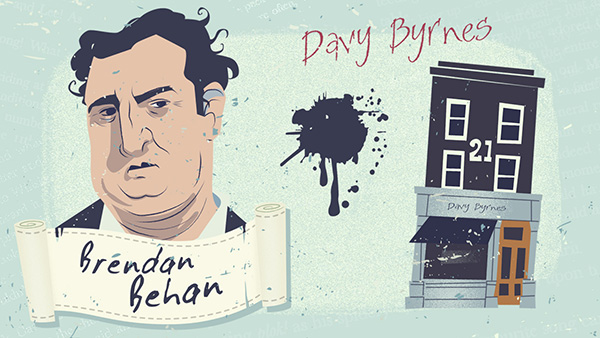 [/fusion_text][fusion_text]El poeta, dramaturgo y escritor Brendan Behan, nació en Dublín y publicó tanto en irlandés como en inglés. Acudía frecuentemente a disfrutar de una pinta al Davy Byrnes, en cuyas paredes todavía se conserva un mural del suegro de Behan, Cecil French Salkeld, realizado en los 40. El pub, situado en Duke Street, también se hizo popular gracias a la visita de Leopold Bloom, el protagonista del Ulises de Joyce, que pidió un sandwich de queso gorgonzola y un vaso de borgoña.[/fusion_text][/fusion_builder_column][/fusion_builder_row][/fusion_builder_container][fusion_builder_container background_color=”” background_image=”” background_parallax=”none” enable_mobile=”no” parallax_speed=”0.3″ background_repeat=”no-repeat” background_position=”left top” video_url=”” video_aspect_ratio=”16:9″ video_webm=”” video_mp4=”” video_ogv=”” video_preview_image=”” overlay_color=”” overlay_opacity=”0.5″ video_mute=”yes” video_loop=”yes” fade=”no” border_size=”0px” border_color=”” border_style=”” padding_top=”20″ padding_bottom=”20″ padding_left=”” padding_right=”” hundred_percent=”no” equal_height_columns=”no” hide_on_mobile=”no” menu_anchor=”” class=”” id=””][fusion_builder_row][fusion_builder_column type=”1_1″ background_position=”left top” background_color=”” border_size=”” border_color=”” border_style=”solid” spacing=”yes” background_image=”” background_repeat=”no-repeat” padding=”” margin_top=”0px” margin_bottom=”0px” class=”” id=”” animation_type=”” animation_speed=”0.3″ animation_direction=”left” hide_on_mobile=”no” center_content=”no” min_height=”none”][fusion_title size=”2″ content_align=”center” style_type=”single solid” sep_color=”” margin_top=”” margin_bottom=”” class=”” id=””]Graham Greene[/fusion_title][fusion_text]
[/fusion_text][fusion_text]El poeta, dramaturgo y escritor Brendan Behan, nació en Dublín y publicó tanto en irlandés como en inglés. Acudía frecuentemente a disfrutar de una pinta al Davy Byrnes, en cuyas paredes todavía se conserva un mural del suegro de Behan, Cecil French Salkeld, realizado en los 40. El pub, situado en Duke Street, también se hizo popular gracias a la visita de Leopold Bloom, el protagonista del Ulises de Joyce, que pidió un sandwich de queso gorgonzola y un vaso de borgoña.[/fusion_text][/fusion_builder_column][/fusion_builder_row][/fusion_builder_container][fusion_builder_container background_color=”” background_image=”” background_parallax=”none” enable_mobile=”no” parallax_speed=”0.3″ background_repeat=”no-repeat” background_position=”left top” video_url=”” video_aspect_ratio=”16:9″ video_webm=”” video_mp4=”” video_ogv=”” video_preview_image=”” overlay_color=”” overlay_opacity=”0.5″ video_mute=”yes” video_loop=”yes” fade=”no” border_size=”0px” border_color=”” border_style=”” padding_top=”20″ padding_bottom=”20″ padding_left=”” padding_right=”” hundred_percent=”no” equal_height_columns=”no” hide_on_mobile=”no” menu_anchor=”” class=”” id=””][fusion_builder_row][fusion_builder_column type=”1_1″ background_position=”left top” background_color=”” border_size=”” border_color=”” border_style=”solid” spacing=”yes” background_image=”” background_repeat=”no-repeat” padding=”” margin_top=”0px” margin_bottom=”0px” class=”” id=”” animation_type=”” animation_speed=”0.3″ animation_direction=”left” hide_on_mobile=”no” center_content=”no” min_height=”none”][fusion_title size=”2″ content_align=”center” style_type=”single solid” sep_color=”” margin_top=”” margin_bottom=”” class=”” id=””]Graham Greene[/fusion_title][fusion_text]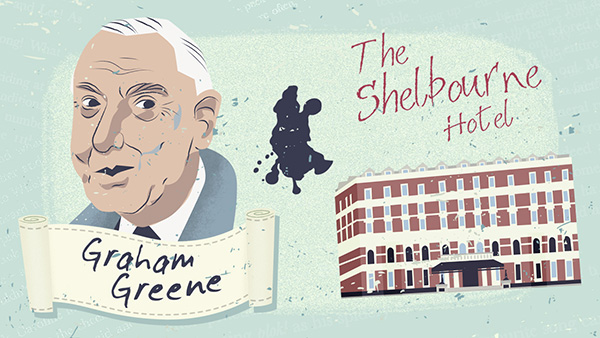 [/fusion_text][fusion_text]Al escritor británico le gustaba visitar Dublín. Precisamente, fruto de una de esas visitas es “Impresiones de Dublín“, de 1923. En el espacio de dos años se alojó en el Hotel Shelbourne, mientras escribía El fin del romance, y en varias ocasiones habló con nostalgia del tiempo pasado allí.[/fusion_text][/fusion_builder_column][/fusion_builder_row][/fusion_builder_container][fusion_builder_container background_color=”” background_image=”” background_parallax=”none” enable_mobile=”no” parallax_speed=”0.3″ background_repeat=”no-repeat” background_position=”left top” video_url=”” video_aspect_ratio=”16:9″ video_webm=”” video_mp4=”” video_ogv=”” video_preview_image=”” overlay_color=”” overlay_opacity=”0.5″ video_mute=”yes” video_loop=”yes” fade=”no” border_size=”0px” border_color=”” border_style=”” padding_top=”20″ padding_bottom=”20″ padding_left=”” padding_right=”” hundred_percent=”no” equal_height_columns=”no” hide_on_mobile=”no” menu_anchor=”” class=”” id=””][fusion_builder_row][fusion_builder_column type=”1_1″ background_position=”left top” background_color=”” border_size=”” border_color=”” border_style=”solid” spacing=”yes” background_image=”” background_repeat=”no-repeat” padding=”” margin_top=”0px” margin_bottom=”0px” class=”” id=”” animation_type=”” animation_speed=”0.3″ animation_direction=”left” hide_on_mobile=”no” center_content=”no” min_height=”none”][fusion_title size=”2″ content_align=”center” style_type=”single solid” sep_color=”” margin_top=”” margin_bottom=”” class=”” id=””]Rudyard Kipling[/fusion_title][fusion_text]
[/fusion_text][fusion_text]Al escritor británico le gustaba visitar Dublín. Precisamente, fruto de una de esas visitas es “Impresiones de Dublín“, de 1923. En el espacio de dos años se alojó en el Hotel Shelbourne, mientras escribía El fin del romance, y en varias ocasiones habló con nostalgia del tiempo pasado allí.[/fusion_text][/fusion_builder_column][/fusion_builder_row][/fusion_builder_container][fusion_builder_container background_color=”” background_image=”” background_parallax=”none” enable_mobile=”no” parallax_speed=”0.3″ background_repeat=”no-repeat” background_position=”left top” video_url=”” video_aspect_ratio=”16:9″ video_webm=”” video_mp4=”” video_ogv=”” video_preview_image=”” overlay_color=”” overlay_opacity=”0.5″ video_mute=”yes” video_loop=”yes” fade=”no” border_size=”0px” border_color=”” border_style=”” padding_top=”20″ padding_bottom=”20″ padding_left=”” padding_right=”” hundred_percent=”no” equal_height_columns=”no” hide_on_mobile=”no” menu_anchor=”” class=”” id=””][fusion_builder_row][fusion_builder_column type=”1_1″ background_position=”left top” background_color=”” border_size=”” border_color=”” border_style=”solid” spacing=”yes” background_image=”” background_repeat=”no-repeat” padding=”” margin_top=”0px” margin_bottom=”0px” class=”” id=”” animation_type=”” animation_speed=”0.3″ animation_direction=”left” hide_on_mobile=”no” center_content=”no” min_height=”none”][fusion_title size=”2″ content_align=”center” style_type=”single solid” sep_color=”” margin_top=”” margin_bottom=”” class=”” id=””]Rudyard Kipling[/fusion_title][fusion_text]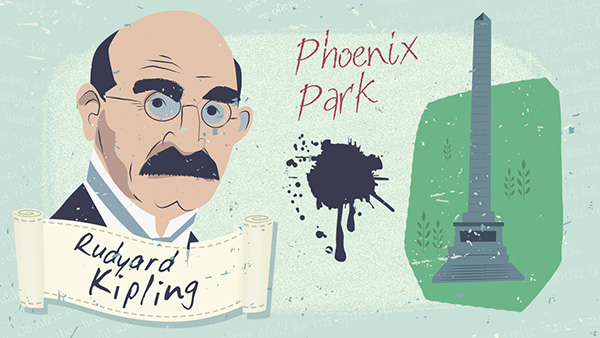 [/fusion_text][fusion_text]El autor de El libro de la selva siempre estuvo interesado en los asuntos irlandeses, en concreto en el debate sobre el estatuto de autonomía. En su poema “Cleared”, hace referencia a la exuberancia del Phoenix Park de Dublín.[/fusion_text][/fusion_builder_column][/fusion_builder_row][/fusion_builder_container]
[/fusion_text][fusion_text]El autor de El libro de la selva siempre estuvo interesado en los asuntos irlandeses, en concreto en el debate sobre el estatuto de autonomía. En su poema “Cleared”, hace referencia a la exuberancia del Phoenix Park de Dublín.[/fusion_text][/fusion_builder_column][/fusion_builder_row][/fusion_builder_container]


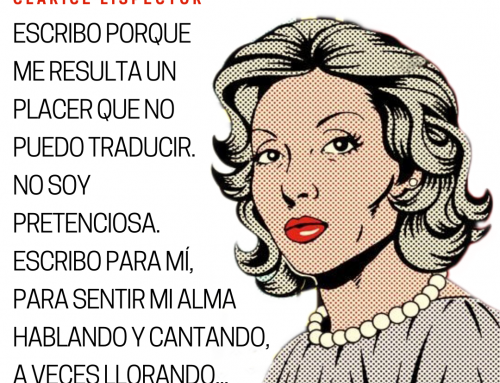
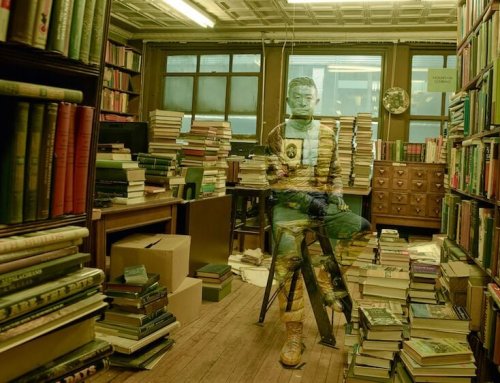

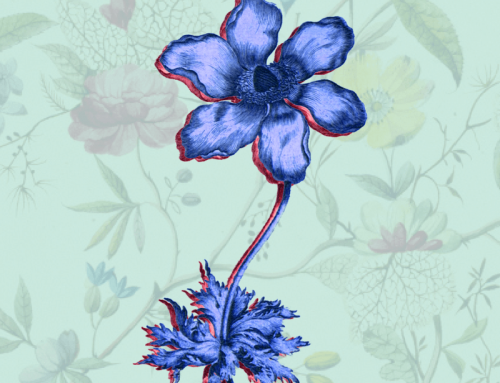


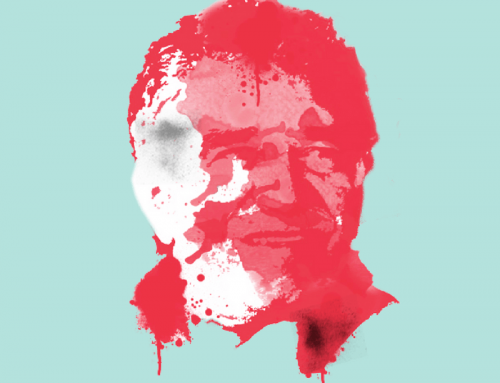
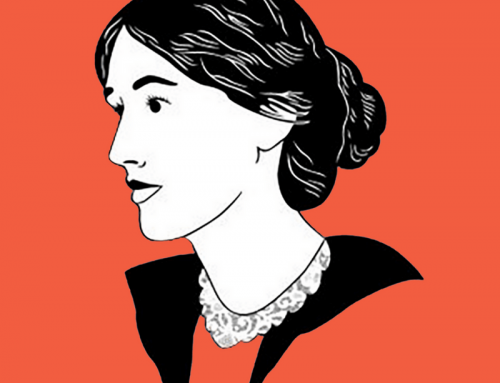

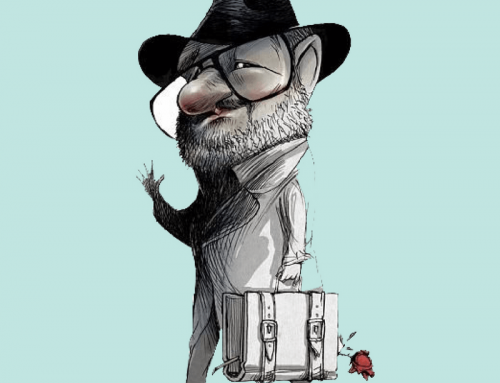

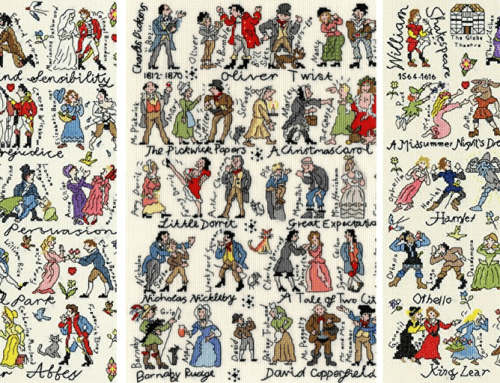
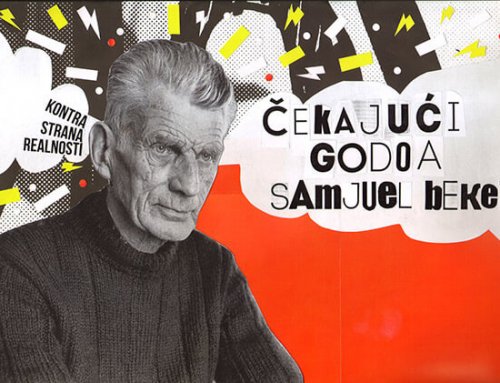
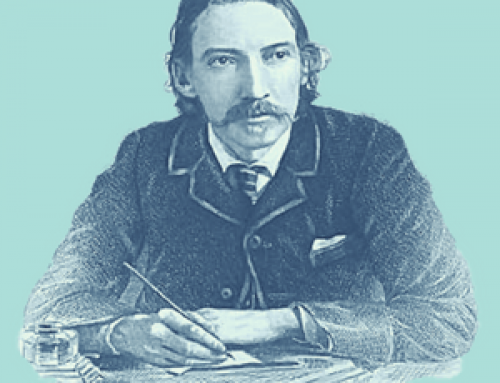
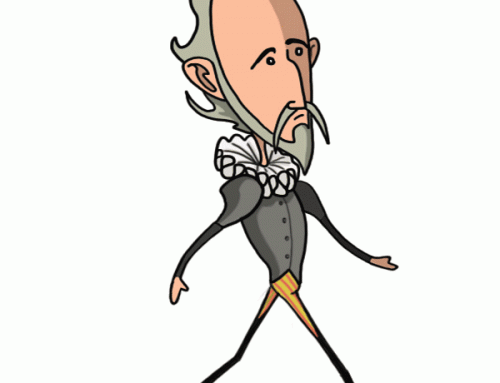


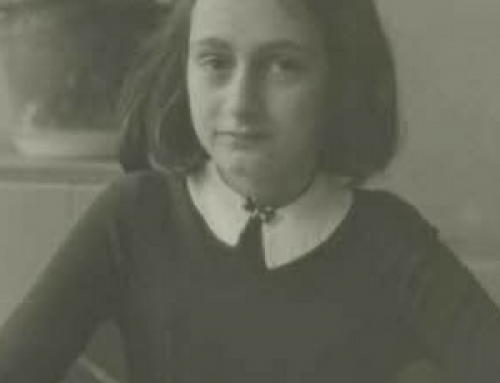






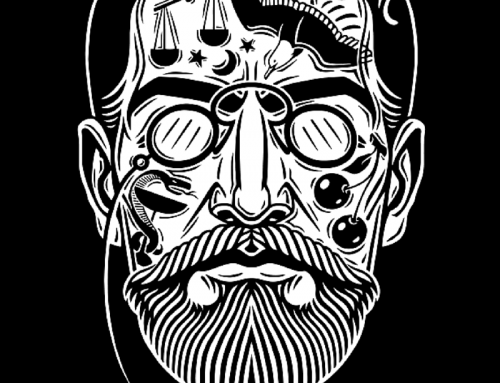
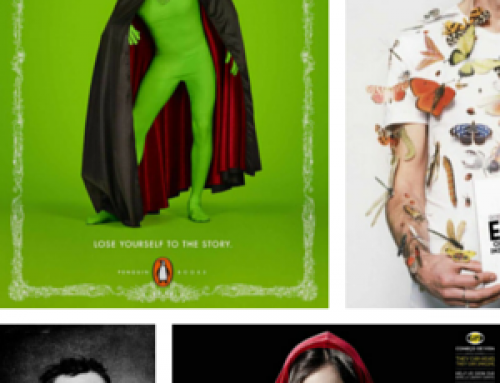
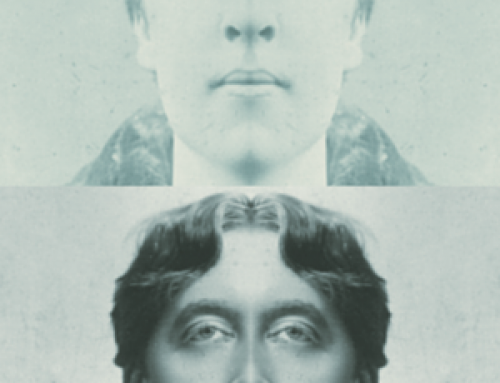

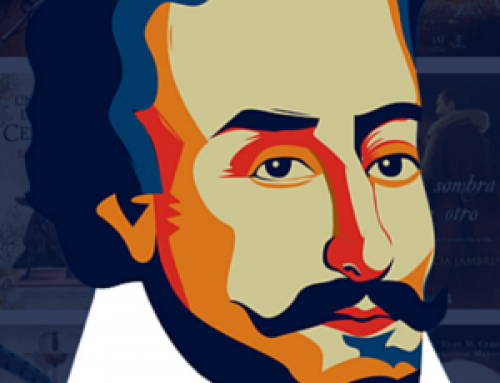
“Mi” autor es Beckett. Le descubrí antes de que le diesen el Nobel, y me quedé entusiasmada. Su forma de escribir, la profundidad de sus temas, su libertad…
¡Qué chulo! Me encanta, gracias
¡Gracias a ti, Bruna (y por compartirlo en twitter 😉 !